Static and Dynamic Magneto-Elastic Sensing Properties of Fe-Al Alloy Powder-Epoxy Composite Patches
Abstract
:1. Introduction
1.1. Motivation
1.2. Background of a Hybrid System
1.3. Magnetostrictive Polymer Composite Systems
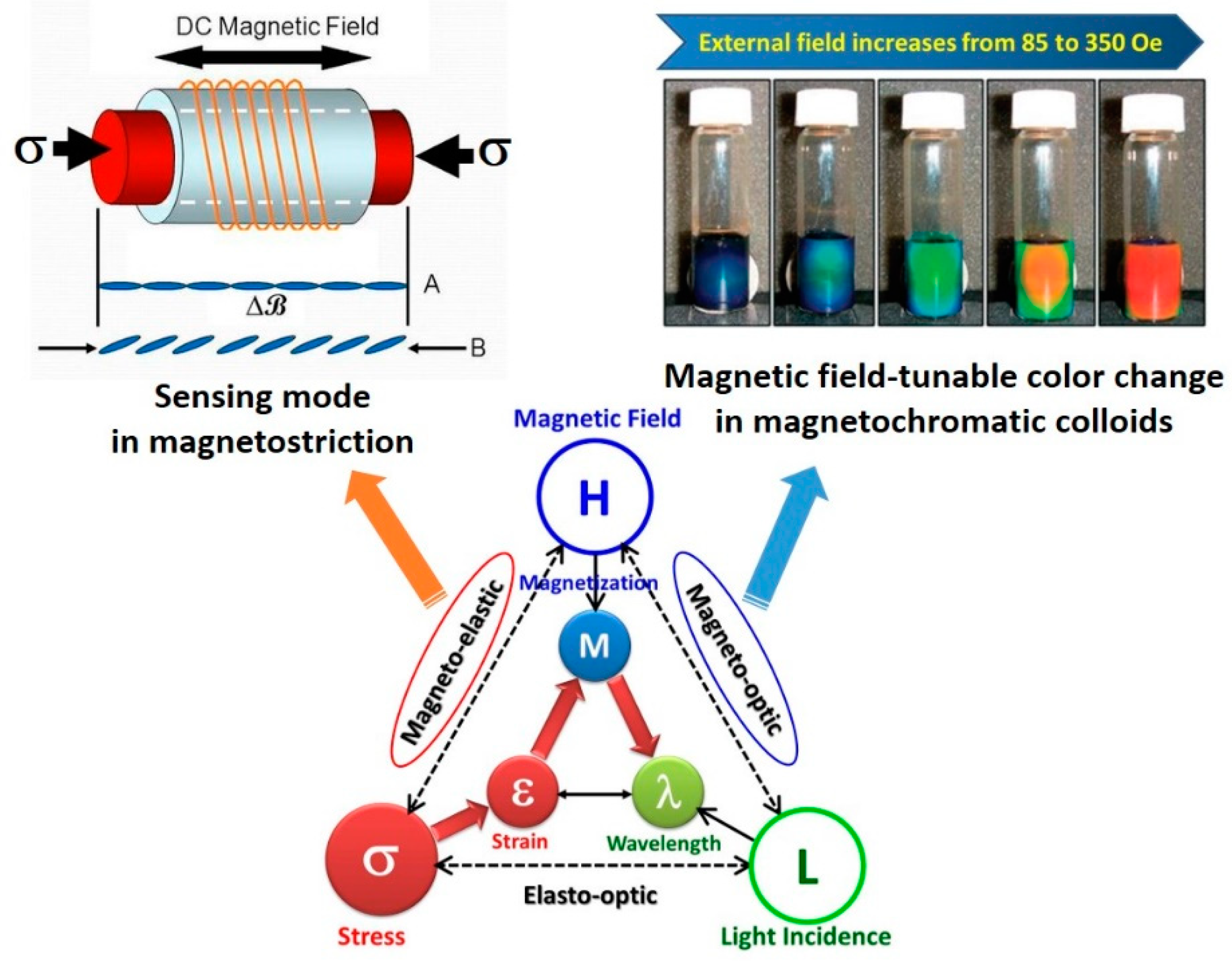
2. Materials and Methods
2.1. Static Test Setup
2.2. Dynamic (Ultrasonic) Test Setup
3. Results
3.1. Static Magneto-Elastic Sensing Properties
3.1.1. Physical and Magnetic Properties of Composites
3.1.2. Tensile Test of Composites
3.2. Dynamic Magneto-Elastic Sensing Properties
4. Conclusions
Author Contributions
Funding
Institutional Review Board Statement
Informed Consent Statement
Data Availability Statement
Acknowledgments
Conflicts of Interest
References
- Stull, C.J.; Earls, C.J.; Koutsourelakis, P.-S. Model-based structural health monitoring of naval ship hulls. Comput. Methods Appl. Mech. Eng. 2011, 200, 1137–1149. [Google Scholar] [CrossRef]
- Restorff, J.B.; Wun-Fogle, M.; Hathaway, K.B.; Clark, A.E.; Lograsso, T.A.; Petculescu, G. Tetragonal magnetostriction and magnetoelastic coupling in Fe-Al, Fe-Ga, Fe-Ge, Fe-Si, Fe-Ga-Al, and Fe-Ga-Ge alloys. J. Appl. Phys. 2012, 111, 023905. [Google Scholar] [CrossRef] [Green Version]
- Kellogg, R.A.; Russell, A.M.; Lograsso, T.A.; Flatau, A.B.; Clark, A.E.; Wun-Fogle, M. Tensile properties of magnetostrictive iron–gallium alloys. Acta Mater. 2004, 52, 5043–5050. [Google Scholar] [CrossRef]
- Kellogg, R.A.; Flatau, A.B.; Clark, A.E.; Wun-Fogle, M.; Lograsso, T.A. Temperature and stress dependencies of the magnetic and magnetostrictive properties of Fe0.81Ga0.19. J. Appl. Phys. 2002, 91, 7821–7823. [Google Scholar] [CrossRef]
- Annapureddy, V.; Na, S.M.; Hwang, G.T.; Kang, M.G.; Sriramdas, R.; Palneedi, H.; Yoon, W.H.; Hahn, B.D.; Kim, J.W.; Ahn, C.W.; et al. Exceeding milli-watt powering magneto-mechano-electric generator for standalone-powered electronics. Energy Environ. Sci. 2018, 11, 818–829. [Google Scholar] [CrossRef]
- Na, S.M.; Park, J.J.; Jones, N.J.; Werely, N.; Flatau, A.B. Magnetostrictive whisker sensor application of carbon fiber-alfenol composites. Smart Mater. Struct. 2018, 27, 105010. [Google Scholar] [CrossRef]
- Na, S.M.; Flatau, A.B. Single grain growth and large magnetostriction in secondarily recrystallized Fe-Ga thin sheet with sharp Goss (011)[100] orientation. Scr. Mater. 2012, 66, 307–310. [Google Scholar] [CrossRef]
- Na, S.M.; Flatau, A.B. Global Goss grain growth and grain boundary characteristics in magnetostrictive Galfenol sheets. Smart Mater. Struct. 2013, 22, 125026. [Google Scholar] [CrossRef]
- Na, S.M.; Flatau, A.B. Temperature dependence of abnormal grain growth and high magnetostriction in Goss-oriented Fe-Al thin sheets. J. Appl. Phys. 2014, 115, 17A913. [Google Scholar] [CrossRef]
- Ge, J.; Lee, H.; He, L.; Kim, J.; Lu, Z.; Kim, H.; Goebl, J.; Kwon, S.; Yin, Y. Magnetochromatic microspheres: Rotating photonic crystals. J. Am. Chem. Soc. 2009, 131, 15687–15694. [Google Scholar] [CrossRef] [PubMed]
- Elhajjar, R.; Law, C.-T.; Pegoretti, A. Magnetostrictive polymer composites: Recent advances in materials, structures and properties. Prog. Mater. Sci. 2018, 97, 204–229. [Google Scholar] [CrossRef]
- Or, S.W.; Nersessian, N.; Carman, C.P. Dynamic magnetomechanical behavior of Terfenol-D/Epoxy 1-3 particulate composites. IEEE Trans. Magn. 2004, 40, 71–77. [Google Scholar] [CrossRef]
- Yoo, B.; Na, S.M.; Flatau, A.B.; Pines, D.J. Ultrasonic guided wave sensing performance of a magnetostrictive transducer using Galfenol flakes-polymer composite patches. J. Appl. Phys. 2015, 117, 17A916. [Google Scholar] [CrossRef]
- Kwon, S.H.; Na, S.M.; Flatau, A.B.; Choi, H.J. Fe–Ga alloy based magnetorheological fluid and its viscoelastic characteristics. J. Indust. Eng. Chem. 2020, 82, 433–438. [Google Scholar] [CrossRef]
- Yoo, B.; Na, S.M.; Flatau, A.B.; Pines, D.J. Evaluation of Magnetorheological Elastomers with Oriented Fe–Ga Alloy Flakes for Force Sensing Applications. IEEE Trans. Magn. 2016, 52, 2501104. [Google Scholar] [CrossRef]
- Base and Minor Metal Prices. Available online: https://www.asianmetal.com (accessed on 1 September 2015).
- Ge, J.; Hu, Y.; Biasini, M.; Beyermann, W.P.; Yin, Y. Superparamagnetic magnetite colloidal nanocrystal clusters. Angew. Chem. Int. Ed. 2007, 46, 7428–7431. [Google Scholar] [CrossRef] [PubMed]
- Senthilkumar, N.; Kalaichelvan, K.; Elangovan, K. Mechanical behavior of aluminum particulate epoxy composite-experimental study and numerical simulation. Int. J. Mech. Mater. Eng. 2012, 7, 214–221. [Google Scholar]
- Ahmed, S.; Jones, F.R. A review of particulate reinforcement theories for polymer composites. J. Mater. Sci. 1990, 25, 4933–4942. [Google Scholar] [CrossRef]
- Yoo, B.; Na, S.M.; Pines, D.J. Influence of particle size and filling factor of Galfenol flakes on sensing performance of magnetostrictive composite transducers. IEEE Trans. Magn. 2015, 51, 2503204. [Google Scholar] [CrossRef]
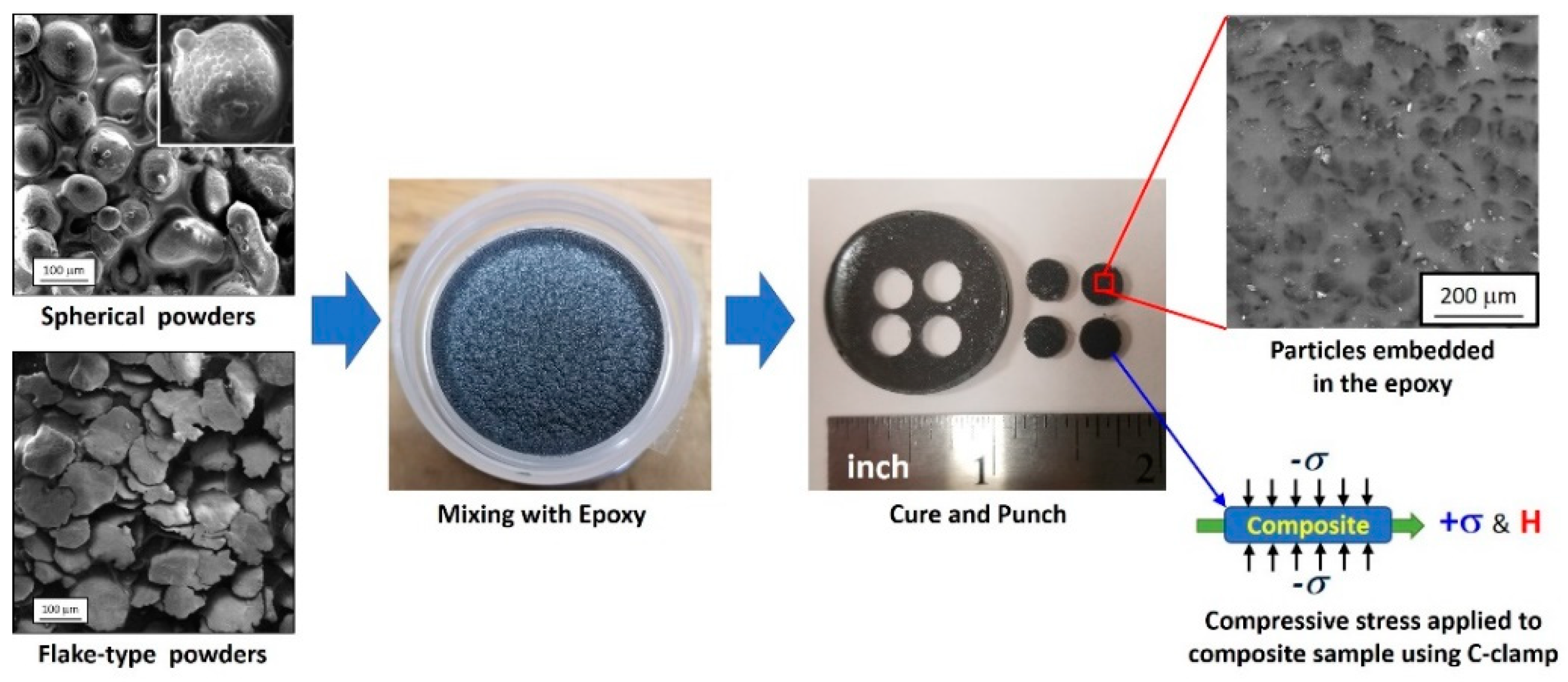


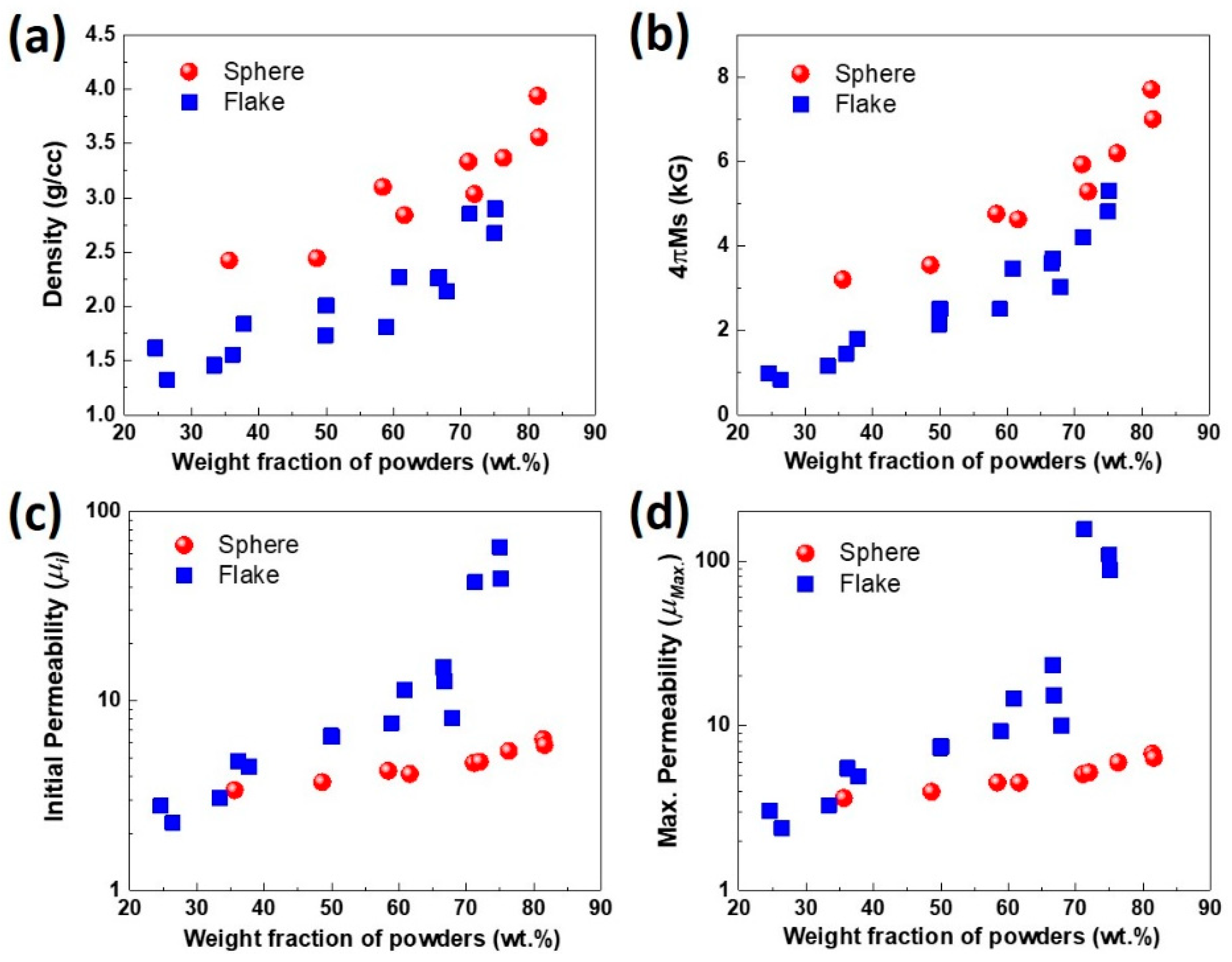
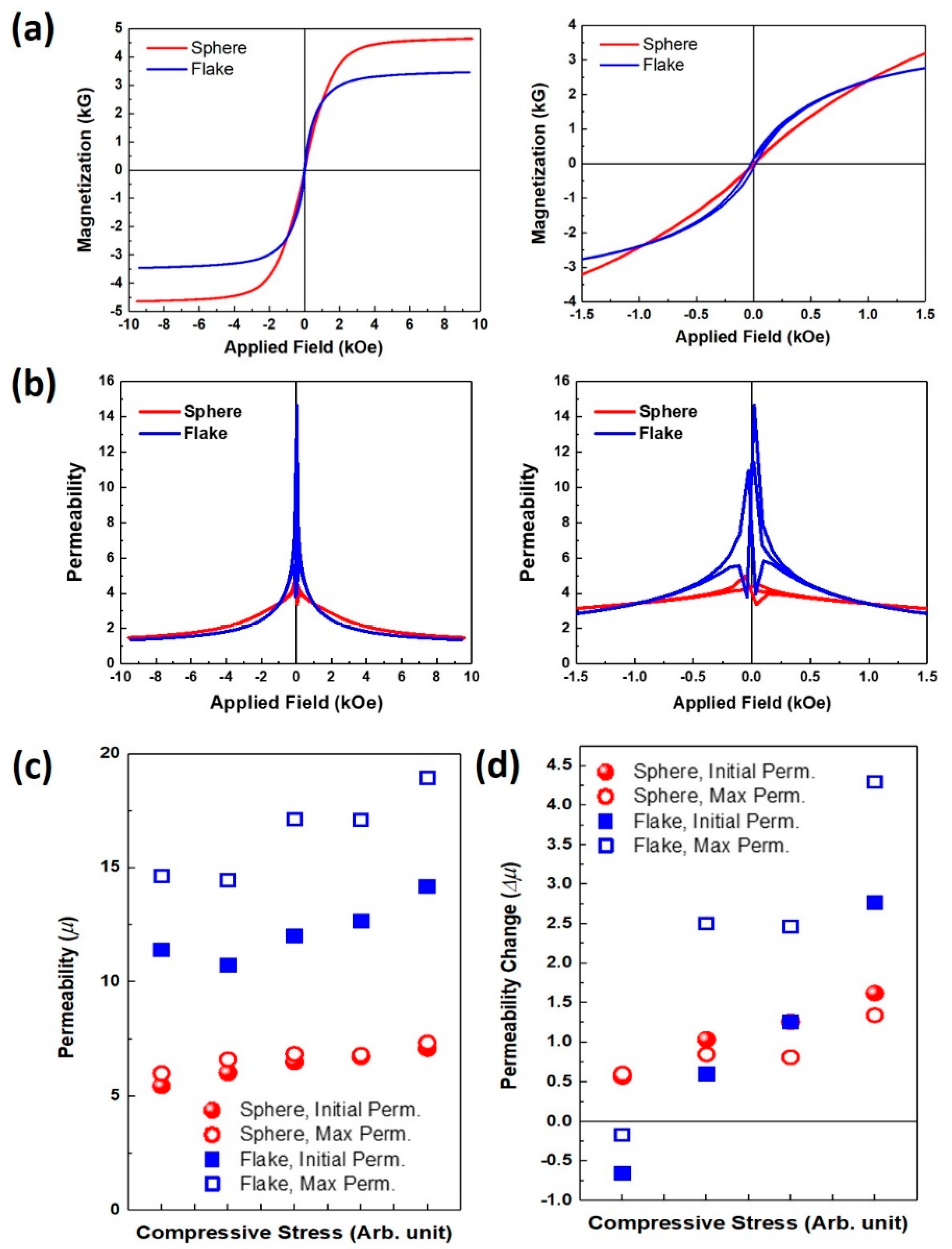
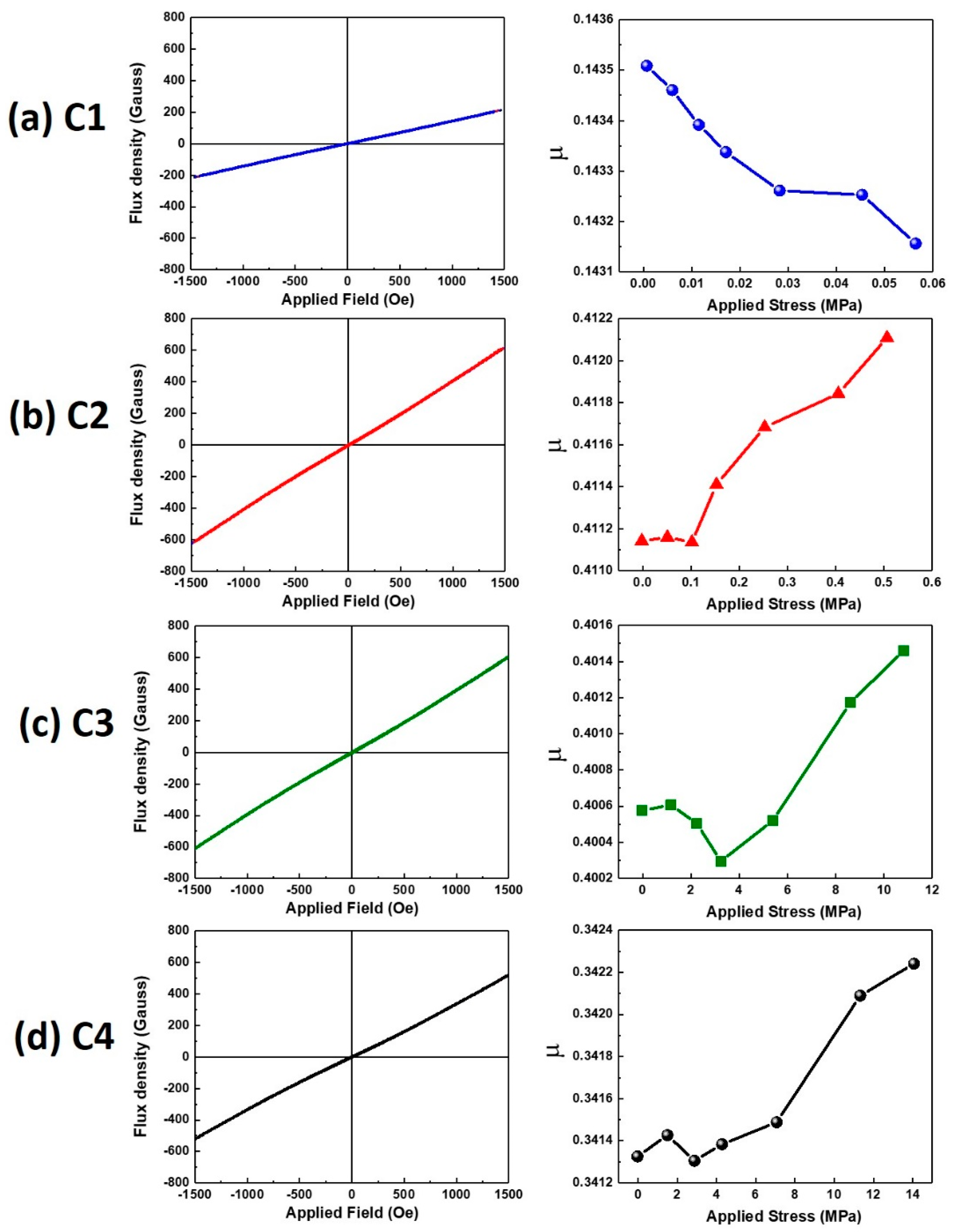

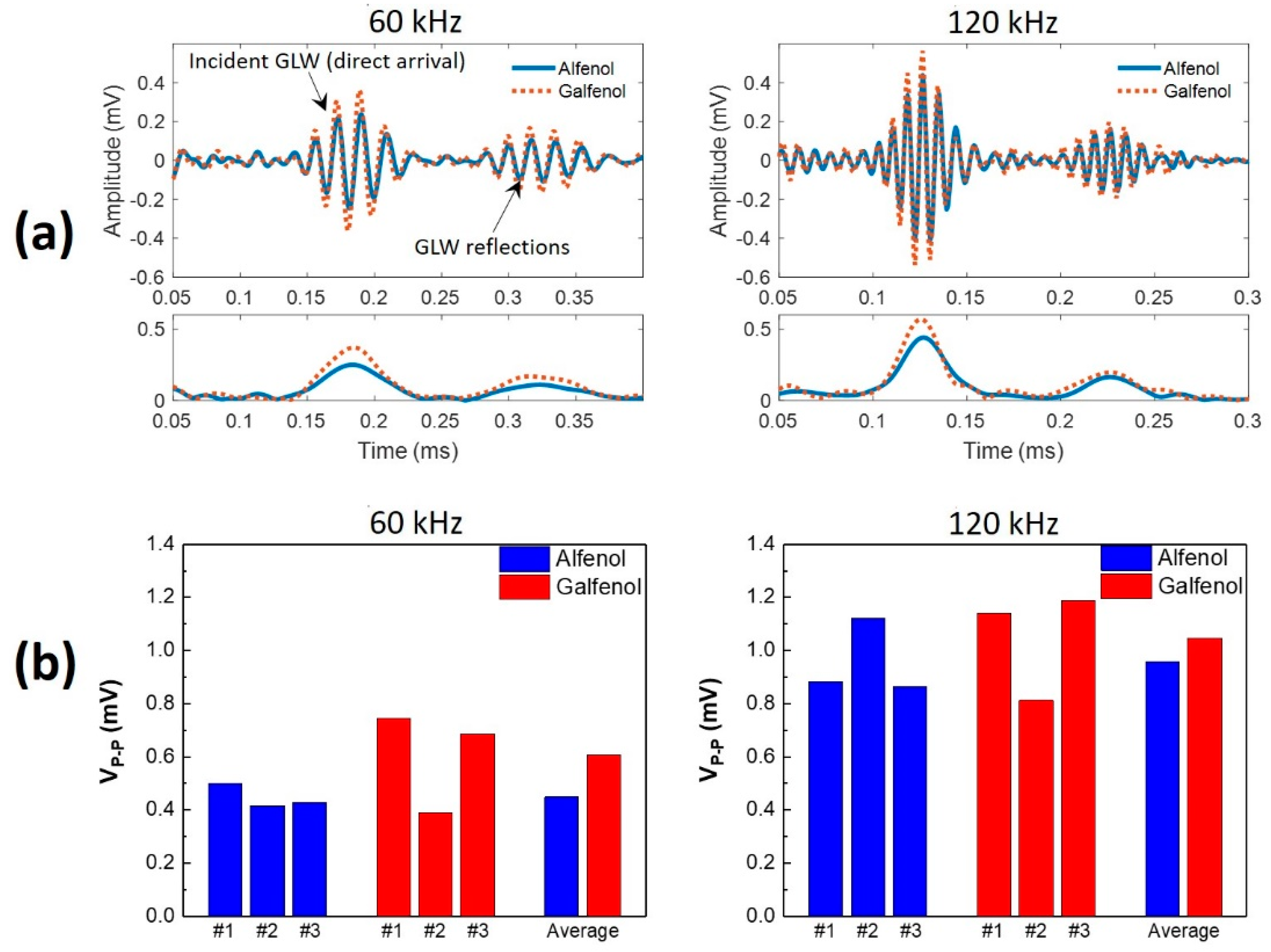
| Sample ID | Powder Weight/Volume Fraction (WP/VP) | Particle Size (μm) | Young’s Modulus (EC) | Epoxy | ||
|---|---|---|---|---|---|---|
| Product Name * | Density (g/cm3) | Young’s Modulus (EE) | ||||
| C1 | 0.417/0.0964 | 53–106 | 0.0564 GPa | WC540 | 1.06 | - |
| C2 | 0.521/0.1407 | 106–150 | 0.5042 GPa | WC756 | 1.07 | 0.098 GPa |
| C3 | 0.537/0.1521 | 53–106 | 10.7263 GPa | WC792 | 1.10 | 1.86 GPa |
| C4 | 0.589/0.1818 | 106–150 | 14.0480 GPa | WC792 | 1.10 | 1.86 GPa |
Publisher’s Note: MDPI stays neutral with regard to jurisdictional claims in published maps and institutional affiliations. |
© 2022 by the authors. Licensee MDPI, Basel, Switzerland. This article is an open access article distributed under the terms and conditions of the Creative Commons Attribution (CC BY) license (https://creativecommons.org/licenses/by/4.0/).
Share and Cite
Na, S.-M.; Yoo, B.; Pines, D.J.; Yoo, J.-H.; Jones, N.J. Static and Dynamic Magneto-Elastic Sensing Properties of Fe-Al Alloy Powder-Epoxy Composite Patches. Magnetism 2022, 2, 105-116. https://doi.org/10.3390/magnetism2020008
Na S-M, Yoo B, Pines DJ, Yoo J-H, Jones NJ. Static and Dynamic Magneto-Elastic Sensing Properties of Fe-Al Alloy Powder-Epoxy Composite Patches. Magnetism. 2022; 2(2):105-116. https://doi.org/10.3390/magnetism2020008
Chicago/Turabian StyleNa, Suok-Min, Byungseok Yoo, Darryll J. Pines, Jin-Hyeong Yoo, and Nicholas J. Jones. 2022. "Static and Dynamic Magneto-Elastic Sensing Properties of Fe-Al Alloy Powder-Epoxy Composite Patches" Magnetism 2, no. 2: 105-116. https://doi.org/10.3390/magnetism2020008
APA StyleNa, S.-M., Yoo, B., Pines, D. J., Yoo, J.-H., & Jones, N. J. (2022). Static and Dynamic Magneto-Elastic Sensing Properties of Fe-Al Alloy Powder-Epoxy Composite Patches. Magnetism, 2(2), 105-116. https://doi.org/10.3390/magnetism2020008





